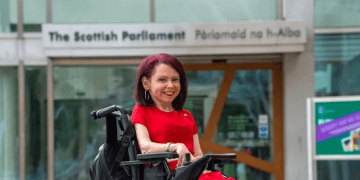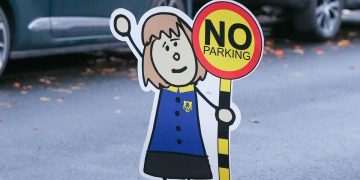Sandra Wrench shares three crucial reasons parents should not ignore Child Benefit.
A former Department for Work and Pensions (DWP) employee with 42 years’ experience dealing with State Pensions and benefits, is urging all parents to claim Child Benefit – even if they do not qualify for the payment element of the benefit delivered by HM Revenue and Customs (HMRC).
Sandra Wrench explains three key reasons for claiming Child Benefit, which include boosting National Insurance credits, National Insurance number allocation for your child, and topping up your State Pension.
The ex-DWP employee told the Daily Record: “With the introduction of the High Income Child Benefit Charge in January 2013, some parents whose earnings exceed the limit of £50-£60,000 have not bothered to submit a claim to Child Benefit after January 2013, as they are not entitled to the payment of Child Benefit. However, from April 2024 the earnings limit increased to £60,000 – £80,000.”
READ MORE: Parents urged to check for £500 cash help as summer childcare costs rise to over £1,000READ MORE: Ex-DWP employee identifies key reasons State Pension cannot be means-tested by UK Government
Sandra continued: “If your earnings exceed, it is essential that you still claim Child Benefit, but opt out of the payment. By opting out of the payment of Child Benefit, you do not then have any problem with HMRC chasing you for any overpayments. HMRC not only wants the Child Benefit repaid, but can also fine you.
“By opting out of the payment, this saves you having to complete any Tax Self Assessment, as regards child benefit.”
To opt out of the payment of child benefit, there is a box on the Child benefit claim form in section 4 which you can tick.
Key reasons to claim Child Benefit
Sandra explained that there are three reasons for claiming Child Benefit, even if you opt out of the payment.
National Insurance Credits
You are entitled to NI (National Insurance) credits until the child reaches age 12. You get one credit for each week you have claimed child benefit, so 52 credits for a complete tax year gives you a qualifying year towards your State Pension.
If you then have another child, your NI credits continue until the second child is 12. If your child was 12 in February, you would get NI Credits until the child was 12 in February.
If you had not returned to work when your child was 12, so you had a part qualifying year from April to February, you could make it a qualifying year by paying Voluntary Class 3 contributions.
So check your NI record on a regular basis, for any part qualifying years as well – you can do this on GOV.UK here or call HMRC NI helpline on 0300 200 3500.
National Insurance Number
Sandra explained: “You need to make a claim to Child Benefit for your child to be automatically issued with a National Insurance Number (NINO) at age 16. If you do not register for Child Benefit, your child will not automatically receive a NINO at age 16, but will have to apply for a NINO.
When you register a child with Child Benefit Centre, the child is allocated a NINO at that stage, which is then issued to the child at age 16.
Specified Adult Child Care Credits
If you return to work when your child is still under 12, and you pay NI contributions because you are working, you do not need the NI Child Benefit Credits. So if a family member, under State Pension Age (SPA), such as a grandmother or grandfather, is looking after the child under 12 while the parent is at work, the parent can pass the NI Child Benefit credits to that other family member.
The credits can then be used by this other family member towards their own State Pension, if they have given up work.
These NI Credits are then known as Specified Adult Child Care Credits, and you apply for them through HMRC. HMRC will not award the credits to this other family member without first checking that the parent has a qualifying year from working.
You can only apply for these credits if the parent has claimed child benefit.
More information on Specified Adult Child Care Credits can be found on GOV.UK here.
Backdating Child Benefit
Child Benefit can only be backdated three months, so you need to submit a claim to Child Benefit within three months of the birth of your child.
NI Credits for Child Benefit
If a claim for Child Benefit is made late, the claim can only be backdated three months, which means that NI Credits for Child Benefit can only be backdated three months as well.
Sandra explained how this has resulted in some women losing out on the NI Credits for Child Benefit which would count towards their State Pension. This was reviewed by the UK Government in April 2023, and NI Credits can now be backdated to the birth of the child, so if you have missed out on these NI Credits, you will be able to claim these credits from April 2026.
NINOs issued to 16 year olds, and change of address
Sandra said: “Please ensure you notify HMRC/ Child Benefit of any change of address as the NINO will be sent to your 16 year old at your last known address.
“With parents opting out of the payment of Child Benefit due to the High Income CB Charge, it is essential that parents notify the Child Benefit Centre of any change of address, so the NINO for their child is sent to the correct address. If a parent is not in receipt of Child Benefit, it becomes easy for a change of address to be overlooked and not notified to the relevant department.
Child Benefit rates 2025/26
The new rates started on April 7:
- Eldest or only child – £26.05 a week
- Additional children – £17.25 a week per child
Child Benefit is payable until the child is 16, or up to age 20 if the child is staying in approved education or training.
Sandra warned: “Do not confuse the actual payment of Child Benefit with NI Credits for Child Benefit – the payment of Child Benefit you get for the child up to the age of 16, the CB NI Credits are only available until the child reaches the age of 12.
Full details on Child Benefit can be found on GOV.UK here. You can also contact the Child Benefit helpline is 0300 200 3100.

















































